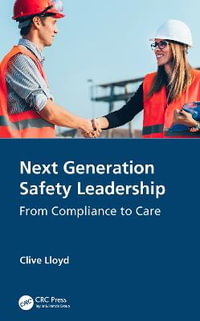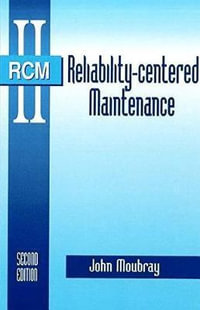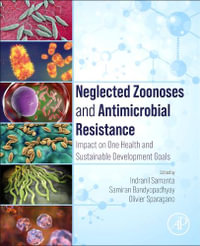List of Illustrations.
List of Instruction Sheets.
Preface.
Acknowledgements.
Units and Abbreviations.
Part 1 Introduction.
Chapter 1 Occupational Hygiene and Risk Assessment.
1.1 Introduction.
1.2 Hazard and risk.
1.3 Risk assessment.
1.4 The stages of a risk assessment.
1.5 Who should carry out risk assessment.
Chapter 2 Identifying Hazards.
2.1 Introduction.
2.2 Identifying hazards.
2.3 Example of hazard identification.
2.4 Conclusions arising from a hazard assessment.
Chapter 3 Exposure, Exposure Routes and Biological
Monitoring.
3.1 Introduction.
3.2 Measuring exposure.
3.3 Biological monitoring.
3.4 Exposure assessment: what the legislation requires.
3.5 Conclusions.
Chapter 4 The Exposure Context.
4.1 Context for measurement.
4.2 Sources of hazardous substances.
4.3 Dispersion through the workroom.
4.4 Receptor.
4.5 Jobs and tasks.
Chapter 5 Why Measure?
5.1 Introduction.
5.2 Reasons for undertaking monitoring.
Chapter 6 How to Carry Out a Survey.
6.1 Introduction.
6.2 Planning the survey.
6.3 Workplace monitoring.
6.4 Monitoring strategies.
6.5 Quality assurance and quality control.
6.6 Survey checklists.
Chapter 7 Analysis of Measurement Results.
7.1 Introduction.
7.2 Dealing with variability in measurement results.
7.3 Summary statistics and data presentation.
Chapter 8 Hygiene Reports and Records.
8.1 Measurement records.
8.2 Survey reports.
Part 2 Inhalation Exposure.
Chapter 9 Dust and Fibrous Aerosols.
9.1 Introduction.
9.2 Airborne dust.
9.3 Fibres.
9.4 Measurement of airborne dust levels.
9.5 Measurement of flow rate.
9.6 Pumps.
9.7 Direct-reading aerosol monitors.
9.8 Calibration of a rotameter or electronic flow calibrator by
using the soap-bubble method.
9.9 The measurement of inhalable airborne dust.
9.10 The measurement of airborne respirable dust by using a
cyclone sampler.
9.11 The sampling and counting of airborne asbestos fibres.
9.12 The choice of filter and filter holder to suit a specific
dust, fume or mist.
9.13 To trace the behaviour of a dust cloud by using a Tyndall
beam.
Chapter 10 Gases and Vapours.
10.1 Introduction.
10.2 Collection devices.
10.3 Containers.
10.4 Direct-reading instruments.
10.5 To measure personal exposure to solvent vapours using an
adsorbent tube.
10.6 Sampling for gases by using a bubbler.
10.7 Tomeasure the short-term airborne concentration of a gas by
using a colorimetric detector tube.
10.8 To measure a vapour concentration using a diffusive
sampler.
Chapter 11 Bioaerosols.
11.1 Introduction.
11.2 Classification of microorganisms.
11.3 Viruses.
11.4 Bacteria.
11.5 Moulds and yeasts.
11.6 Allergens.
11.7 Principles of containment.
11.8 Handling microorganisms.
11.9 Monitoring bioaerosols.
11.10 Measurement of endotoxins and allergens.
11.11 Interpretation of sample results.
Part 3 Dermal and Ingestion Exposure.
Chapter 12 Dermal and Ingestion Exposure Measurement.
12.1 Introduction.
12.2 Occupations where dermal exposure is important.
12.3 Local and systemic effects.
12.4 How do we know if dermal exposure is an issue?
12.5 What do we measure?
12.6 Methods for dermal exposure measurement.
12.7 Sampling strategy.
12.8 Liquids and solids.
12.9 Biomonitoring and modelling of dermal exposure.
12.10 From exposure to uptake.
12.11 Controlling dermal exposure.
12.12 Inadvertent ingestion exposure.
Part 4 Physical Agents.
Chapter 13 Noise.
13.1 Introduction.
13.2 Pressure and magnitude of pressure variation.
13.3 Frequency.
13.4 Duration.
13.5 Occupational exposure limits.
13.6 Equipment available.
13.7 Sound level meters and personal noise dosimeters.
13.8 Personal noise dosimeters.
13.9 Calibration.
13.10 To measure workplace noise using a SLM.
13.11 To measure workplace noise using a PND.
13.12 To measure the spectrum of a continuous noise by octave
band analysis.
13.13 To determine the degree of noise exposure and the actions
to take.
Chapter 14 Vibration.
14.1 Introduction.
14.2 Vibration.
14.3 Occupational exposure limits.
14.4 Risk assessment.
14.5 Measurements and measurement equipment.
14.6 To measure hand?arm vibration.
14.7 Control of vibration.
Chapter 15 Heat and Cold.
15.1 Introduction.
15.2 Heat stress.
15.3 Measurement equipment.
15.4 Personal monitoring.
15.5 Measurement of the thermal environment.
15.6 Predicted Heat Strain Index.
15.7 Risk assessment strategy.
15.8 Cold.
15.9 To calculate the wind chill factor.
Chapter 16 Lighting.
16.1 Introduction.
16.2 Lighting Standards.
16.3 Equipment available.
16.4 Calibration.
16.5 To measure lighting.
16.6 Control.
Chapter 17 Ionising Radiation.
17.1 Introduction.
17.2 Ionising radiation.
17.3 Background radiation.
17.4 Basic concepts and quantities.
17.5 Types of radiation.
17.6 Energy.
17.7 Activity.
17.8 Radiation dose units.
17.9 Dose limits.
17.10 Derived limits.
17.11 Procedures to minimise occupational dose.
17.12 Personal dosimetry and medical surveillance.
Chapter 18 Non-Ionising Radiation.
18.1 Introduction.
18.2 Ultraviolet radiation.
18.3 Infrared radiation.
18.4 Microwaves and radiowaves.
18.5 Lasers.
Part 5 Assessing the Effectiveness of Control.
Chapter 19 Introduction to Control.
19.1 Introduction.
19.2 Specific control measures.
19.3 The effectiveness of control measures.
Chapter 20 Ventilation.
20.1 Introduction.
20.2 Air pressure.
20.3 Measurement equipment.
20.4 Ventilation measurement records.
20.5 Measurement of air flow in ducts.
20.6 Measurement of pressure in ventilation systems.
20.7 To measure the face velocity on a booth or hood.
20.8 To measure the face velocity on a fume cupboard.
20.9 To measure the performance of a suction inlet.
Chapter 21 Personal Protective Equipment.
21.1 Introduction.
21.2 Components of an effective PPE programme.
21.3 Face-fit testing using a particle counter.
Part 6 Risk Assessment and Risk Communication.
Chapter 22 Risk Assessment.
22.1 Introduction.
22.2 Identify all hazardous substances or agents.
22.3 Identify the likely levels of exposure.
22.4 Identify all persons likely to be exposed.
22.5 Assess whether the exposures are likely to cause harm.
22.6 Consider elimination or substitution.
22.7 Define additional control measures necessary to reduce the
harm to acceptable levels.
Chapter 23 Risk Communication.
23.1 Introduction.
23.2 Risk perception.
23.3 Trust.
23.4 Communication.
23.5 An example of quantitative risk assessment to aid risk
communication.
Equipment Suppliers.
Chemical Analytical Services.
Index.
























